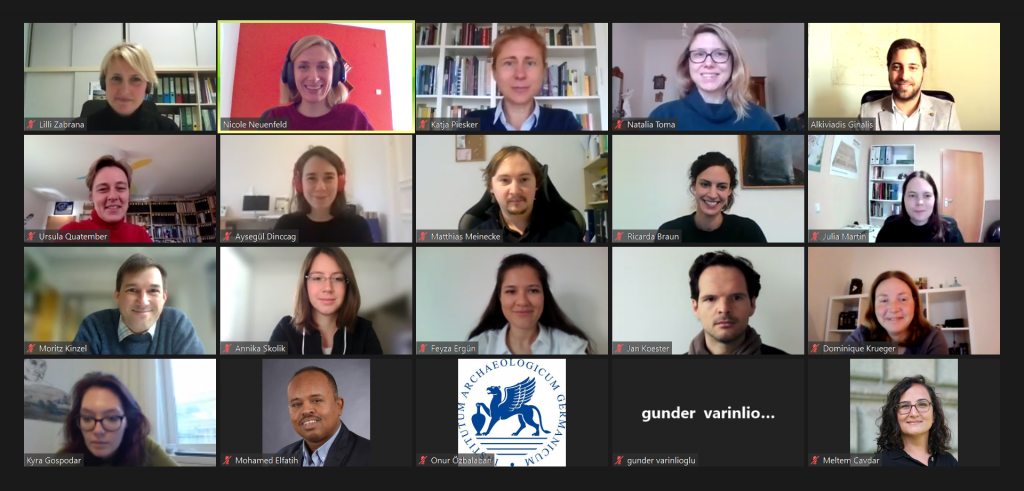The 3rd seminar of the 6th Research Network “Building, Building Economy and Building Sites” was held online between November 19th and 20th, 2021 and focused on resources-related topics brought together under the title “From Extraction to Re-Use: The Economics of Construction Resources”. Besides the members of the DAI Istanbul Research Network, four guest speakers accepted the invitation to participate in the meeting and share their valuable insights into related research questions.
After the welcoming remarks by Alkiviadis Ginalis, the first session, dedicated to extraction and lithic resources, started with Moritz Kinzel’s presentation titled “Where Do All the Stones Come From? About Sources of Building Stones at Neolithic Göbekli Tepe”. The second speaker, Natalia Toma, elaborated on the dynamics of marble resources in Roman Imperial Miletus. Subsequently, Matthias Meinecke, a guest speaker from Leipzig (Germany), discussed resource management in tumulus construction. As the keynote speaker of the meeting, Craig Harvey (Ontario, Canada) gave an enlightening talk on the many lives of brick and stone. He concentrated on ashlar and ceramic building materials from Humayma, Jordan.
Meltem Cavdar acted as the chairperson of the first day’s second session that dealt with the manufacturing and distribution of the brick material. Julia Martin pointed out the potential impact of brick production on agricultural supply in western Asia Minor, while the guest speaker, Alaaddin Tok (Istanbul, Turkey), presented the brick production and trade in Istanbul in the 19th century.

The second day started with the session “Construction, Maintenance and Demolition”, chaired by Feyza Yagci Ergün. It included Kyra Gospodar’s talk about the economics of building materials in the construction and deconstruction of the valley temple of the Bent Pyramid in Dahshur. Following up the case studies from Egypt, the guest speaker, Aysegul Dinccag (Berlin), contributed with her Turkey-based research to the better understanding of the phenomenon of appropriation of local architecture, evident in the case of Imbros/Gökçeada.
The last session of the meeting, chaired by Natalia Toma, was dedicated to the topic “Re-use” and benefited greatly from Lili Zabrana’s broad study on the spoliation of the Ephesian Artemision and the reuse of the lithic material for late antique construction projects such as the Saint John Basilica and the Aqueduct.
The seminar ended with an open discussion: After a short summary by Alkiviadis Ginalis, beneficial discussions and concluding remarks were made. Besides the enlightening talks, the seminar provided a suitable atmosphere to the participants for further collaborations. Although the Research Network has had to take place virtually since the first meeting, regular meetings of the members strengthened the connection and helped to increase the knowledge of the participants on each other’s fields of research. Once again, guest speakers from different backgrounds positively contributed to the academic atmosphere of the network.
